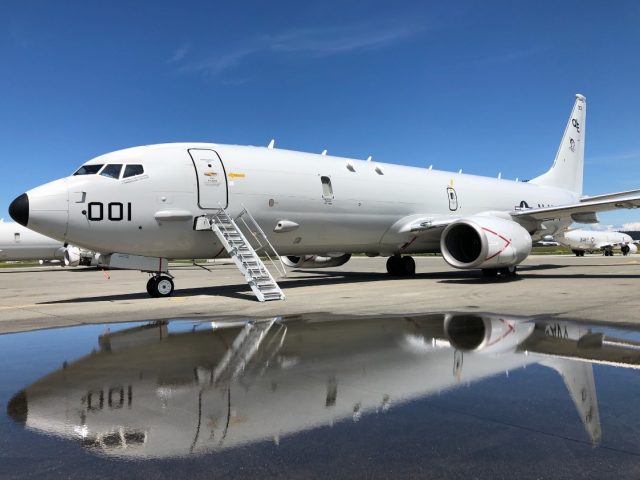The US Navy has now officially switched from the P-3C Orion to the P-8A Poseidon as the fleet’s final squadron, Patrol Squadron (VP) 40, completed the transition to the navy’s newest maritime patrol aircraft in May.
VP-40 began the P-8A platform transition in November 2019 following its return to Naval Air Station (NAS) Whidbey Island after completing the navy’s final active duty P-3C deployment.
On this landmark deployment, the Fighting Marlins contributed to international maritime security while conducting sustained operations from three continents, marking the conclusion of VP-40’s forward-deployed P-3C operations that began in 1968.
The squadron completed the last of its nine P-3C aircraft transfers with the delivery of aircraft 162776 to the Naval Aviation Museum in Pensacola, Fla., and then commenced P-8A transition training under the instruction of VP-30, the Navy’s Patrol and Reconnaissance Fleet Replacement Squadron based out of NAS Jacksonville. VP-30 has been conducting squadron transitions to the P-8A since 2012 utilizing a team of military and civilian maintenance and aircrew professionals.
Transition after 50 years of P-3C
The first phase of the transition consisted of classroom, simulator, and aircraft ground training over the course of two months, and took place at NAS Whidbey Island.
“Though our aircraft has changed, our vision has stayed the same,” said Aviation Maintenance Administrationman 2nd Class Sarah Moore. “As every sailor learns different aspects of the job, and they support our Marlin family. Achieving our shared goals through teamwork has directly resulted in a successful transition from P-3C to P-8A.”
The second phase of the transition introduced in-flight training in addition to continued simulator, classroom, and ground training, and was executed as a three-month detachment to NAS Jacksonville that concluded with a fleet-model performance in the Conventional Weapons Technical Proficiency Inspection. During this phase, the Fighting Marlins also received tactical instruction and training support from other Jacksonville-based commands, including the Maritime Patrol and Reconnaissance Weapons School and the VP-26 Tridents.
“The P-8 operates very differently from the P-3, but the fundamentals of being a pilot remain the same,” said Lt. Alan Thornhill, a pilot with VP-40. “The aircraft has a lot more technology [than the P-3C] and can provide its pilots an immense amount of information. Knowing what information is important and relevant at any given moment still takes practice and training. Automation makes the plane fly more safely but is limited by the understanding and ability of the person managing the automation to make safe and timely decisions. We still focus heavily on the mantra of “aviate, navigate, communicate” to keep ourselves caged on the important details of whatever phase of flight we are in.”
The third and final phase consisted of advanced training, evaluation, and inspections led by the VP-30.1 transition team in Whidbey Island. Support was also provided by other Whidbey Island-based commands, including Patrol and Reconnaissance Wing 10 and the VP-46 Grey Knights. For the aircrew, this final phase culminated in nine aircrews successfully conducting exercise torpedo attacks on a subsurface training target and in all aircrew achieving positional qualifications in the aircraft. For the maintenance professionals of VP-40, this culminated in the successful completion of the Maintenance Program Assist inspection and subsequent Safe for Flight certification, signifying the completion of the transition and VP-40’s ability to independently operate as a P-8A squadron.
“The VP-40 Fighting Marlins sustained their energy, motivation, and focus through seven months of rigorous training,” said Cmdr. Joseph Parsons, VP-40’s Executive Officer. “Our Sailors were consistently recognized by the VP-30 team for their positive attitude, extensive preparation, and exceptional performance.”
With transition complete, VP-40 is now preparing to execute forward-deployed operations across the globe and across all Maritime Patrol and Reconnaissance mission areas, including anti-submarine warfare, anti-surface warfare, intelligence, surveillance, and reconnaissance, and search and rescue.



























